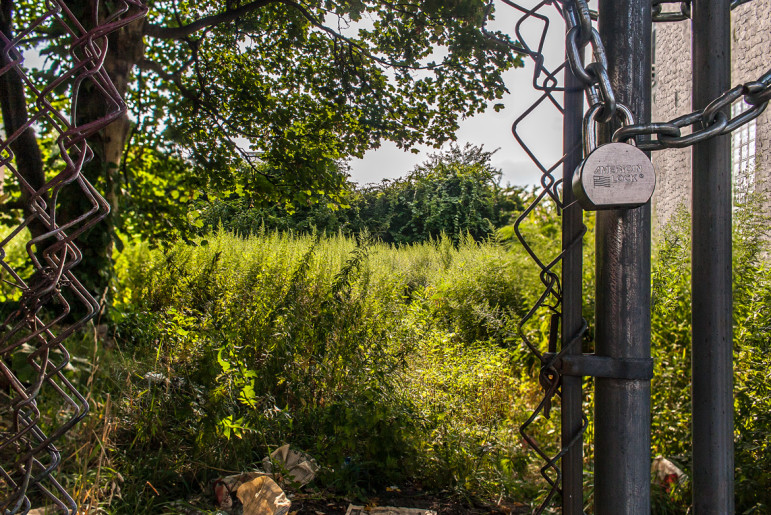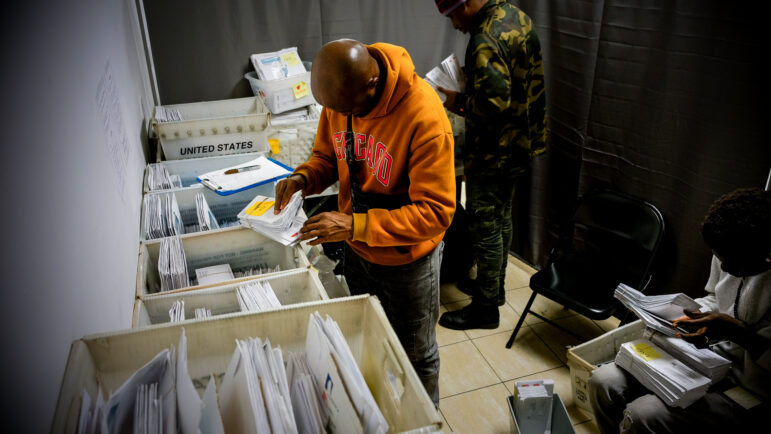“As of 2016, the city had over 1,131 (more or less) parcels of property at its disposal. Instead of using executive orders on projects that benefit a small group of people, the mayor has the power to relinquish parcels of land and abandoned property to address homelessness.”

Adi Talwar
The lot at 22 Suydam Place in Brooklyn was planned as a park/playground in a 1968 master plan. Nothing ever happenedIn 2016, former City Comptroller Scott Stringer produced a report highlighting the number of vacant lots and abandoned properties within the five boroughs, some of them owned by New York City agencies. Six years later, the city’s housing crisis has not abated. In fact, it has gotten progressively worse, especially after the global health crisis of COVID-19.
The recent budget passed by the NYC Council and Mayor Eric Adams fell short of addressing this. Mayor Adams speaks of investing in children and our communities. However, a huge part of that ties directly to affordable housing or supportive housing that, if done correctly, could help address housing insecurity and mental health.
As of that 2016 report, the city had over 1,131 (more or less) parcels of property at its disposal. Instead of using executive orders on projects that benefit a small group of people, the mayor has the power to relinquish parcels of land and abandoned property to address homelessness. The mayor’s executive powers have domain over city agencies, including those holding on to vacant properties. Mayor Adams could use his influence and power to mobilize emergency funding to specifically address the homelessness crisis. The mayor could also request funding from the state, if the ability of local government to deal with the disaster is too great.
New York could take the unprecedented approach to reallocate funds toward the rehabilitation of vacant buildings, especially those with multiple dwellings. Anything four stories and above should have a social services office on the premises. This single act of redressing government power toward its citizens could help alleviate stress for many homeless New Yorkers.
The mayor could absorb the city’s vacant properties into the portfolio of municipal buildings, therefore absolving the property from paying taxes and recirculating funds back into the building for maintenance upkeep. Many cities around the country use the exemption clause for municipal properties. The mayor could incorporate all abandoned structures four to six stories and above that could be used to house families, exempt the building from paying taxes, refurbish the properties with HUD funds and/or emergency funds within the city coffers of funding from the state. The mayor or City Council could create a new department other than NYCHA to oversee the buildings, or outsource to community organizations that have been fighting for a land trust.
Meanwhile, the city could take a more aggressive approach towards addressing mental illness and homelessness by using its media department, the same way it did when COVID was running rampant, and have experienced medical doctors speak about the benefits of addressing these two, sometimes co-occurring conditions. The city could create mobile buses making weekly visits to these affordable buildings to provide medical and mental health care to tenants. Housing—secure housing—can be the baseline for which NYC partakes in this fight.
Addressing these two co-occurring crises could help with the rise in crime. Not all crimes are the result of homelessness and/or mental illness, but for those that are, the city could shift its many resources towards addressing these inequalities. The New York Police Department should not be used as the first line in addressing such issues. Utilizing workers from the medical and social services fields is the solution, and politicians must be creative and not see every issue as a hammer and nail approach that requires the NYPD.
Government has a responsibility toward its citizens and now is not the time to retreat. Bold policies, tossing ideas on the wall and seeing what sticks is our best approach. Mayor Adams: Your vision for becoming a more inclusive city begins with serving the people who put you in office. No one will fault you for trying to uplift New Yorkers. You have the opportunity to set yourself apart from any previous administration. Help the people who need it the most.
There are multi-faceted issues happening in New York, but please don’t fall into the trap that more policing will get New York City out of this cycle. Try a different approach. Increase access to mental health experts, have them join with NYPD on tours, and address the housing issue by incorporating abandoned buildings into the city’s housing portfolio.
John Thompson Jr. works in the social services sector in NYC and is a former adjunct at Monroe College.









5 thoughts on “Opinion: Use NYC’s Vacant Lots and Buildings to Help Solve the Housing Crisis”
Most of the city-owned vacant lots are small odd-shaped parcels not suitable for construction of any kind.
I see quite a few vacant lots around town that clearly once had apartment buildings on them. Perhaps they’re not city-owned – yet.
Absentee playboy ersatz mayor and amateur expert on pests and vermin faces new challenge. He may have a stint at learning a work ethic despite his present shady background.
Already deals with homelessness by putting them out of sight. So how is the influx of migrants from out of state practically different except his spending municipal funds to put them up in his chief of staff’s real estate pals’ rundown condemned third rate hotels?
https://citylimits.org/2022/07/18/pressed-for-shelter-space-nyc-turns-to-notorious-landlords-with-ties-to-mayors-chief-of-staff/
It’s illegal under the New York City charter to give away public property without competitive bidding. This is an illegal government giveaway scam to so-called ‘non-profits’ who’s Directors make $500,000 a year and then receive even more city money annually to operate these facilities.
If this legislation passes, the sponsors and those councilman and women voting for it should go to jail.